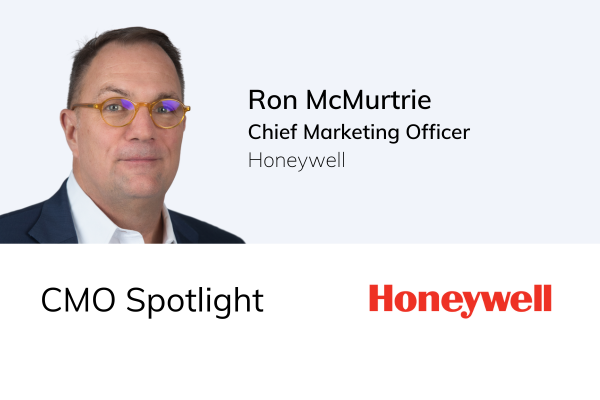7 Marketing Experts Discuss Paid Media
At Setup, we help client-side marketers fill in the gaps by pairing them with a marketing agency that fits the client’s needs. A hot topic capability amongst brands is Paid Media Marketing.
We spoke with Paid Media marketing experts from some of our agency partners about the current status of Paid Media in the marketing industry, what tactics are most successful, and how to shift a paid marketing strategy quickly.
Q1 | What are some popular paid media tactics that lead to success?
Social Listening
Sparkloft Media’s Associate Director, Distribution & Partnerships, Alec Wooden, said the most important factor to consider when drafting a media plan is knowing the audience, especially their behavior on social media. “We've been putting a lot of resources into audience design for social which includes pulling in brand data but also leveraging social listening data to learn more about possible prospecting audiences. This social listening research actively finds audiences who are talking about a specific product or brand and evaluates how they're talking about it, what keywords are relevant, where they are geographically and which platforms they're present on. The social listening research can also inform what kind of content we need to create for a campaign.”
Partnerships
Modo Modo Agency’s Director of Media, Melissa Nordin, shared that partnerships are crucial to reach niche audiences, educate the community with content, and gain credibility. “Ensuring our rep understands the business challenge we are trying to address, so that our efforts are successful. Often this includes a full-funnel approach that tackles awareness and mental availability (banners, roadblocks, etc.), education (podcasts, webinars), and lead generation (high-value gated assets – e.g., whitepapers, e-books, infographics).
Some partnerships include vendors like Connected TV, or Performance TV. Nordin shared, “For B2B, we partner with vendors that offer specific targeting capabilities but who also optimize towards and measure conversion (and deliver across blue chip networks).” CTV is relevant and performing well for B2B clients.
Elaine Fowler, the Director of Marketing at Sagepath Reply, emphasized the value of CTV. “We have worked with clients to leverage programmatic to enter spaces (like CTV, Audio, and DOOH - digital out-of-home) that they otherwise couldn't afford. It also allows us to measure and adjust investment, location, and tactics, all with much more flexibility than traditional buys.”
Social Media Platforms
“[Modo Modo’s] biggest paid social channel is LinkedIn,” shared Nordin. “We are in a constant state of test and measure, identifying targeting strategies, ad units, budget allocations, etc. that will help us best deliver against our clients’ objectives.” Modo Modo has noticed that downloadable content and ads have been most successful for lead generation.
Multi Platform Strategies
Leveraging multiple platforms and utilizing data is the key tactic for Jeff Cline, the Paid Media Manager at Acadia. “We develop diverse multi platform strategies with consideration of sales funnel stages. When we are able to leverage multiple platforms to their strengths, we can provide the best outcomes. In recent years Acadia has augmented these strategies with 1st and 3rd party data and robust analytics to guide offline business decisions as well as online, providing a whole business picture for clients.”
Despite trying to reach consumers on multiple channels, Wooden noted that “we’re seeing audiences become more single-platform focused; that is, the number of unique users who may log on to numerous social platforms each day is shrinking. Particularly for younger audiences, we’re seeing a tendency to latch on to a favorite and spend the majority, or all, of their time there. What used to be a multi-channel approach to continuously reach the same groups of people on different platforms is now a multi-channel approach to reach an individual on the platform where they spend the most time.”
Video
Among these multi platform strategies is harnessing video on social. The EVP of Media, Catie Cryder, and the Senior Director of Media Strategy, Liz Nelligan, from Ansira stated that video increases reach. Each form of video (social, streaming, etc.), comes with its own challenges. “When customizing social to the client needs, audience and the platform (very different video content on Pinterest than TikTok, for example), you see the relevancy score and engagement go up significantly. Streaming video drives significant incremental reach and frequency.”
Wooden from Sparkloft also noted the video preference audiences share. “We put a lot of intention and effort into understanding where a client’s audience already exists and where we can focus parts of a media plan to be more opportunistic. Of late, those audience findings are pushing us to invest more into platforms that are blending the best of simple awareness opportunities with audiences who are engaged and keen on discovery and action (in a word: TikTok).”
Programmatic Display
Ryan Hurley, the VP Media Strategy & Growth at Bounteous, shared, “As success is relative to a client’s particular goals, the tactics that lead to success have been varied, particularly over the past few years. Specifically, we’ve seen great results with programmatic display in driving incremental sales lift, first-party audience targeting on Meta in driving brand engagement, and Paid Search in driving direct product sales.”
Q2 | How has paid media changed in the last few years?
Personalization
Data has led to an increase of personalization based on preferences. “Brands will look to continue to own and leverage first party data to drive a more personalized experience with customers,” stated Fowler from Sagepath. Nordin with Modo Modo emphasized the importance of leveraging first party data and “contextual targeting” to understand the consumer, especially in a cookieless future.
Cryder and Nelligan at Ansira commented that, “By leveraging audience insights, we’re able to align the right content to the right consumer with the right message at the right time.” Their data has shown that there’s an increase in streaming video usage over the last few years, much of which is ad supported. This means there is more opportunity to get their message in front of people while they’re actively engaged.
Automation + Privacy
“Automation and Privacy have been the two largest factors driving paid media in the last few years,” Acadia’s Cline stated. “Privacy concerns from GDPR (General Data Protection Regulation), CCPA (California Consumer Privacy Act), and the Apple iOS update limited some data and restricted some of the more detailed audiences we could target on those platforms, allowing for a resurgence of programmatic efforts where we can still maintain more granular targeting.”
In an effort to still collect data to understand consumers, marketers are leveraging New Campaign types like Google's Performance Max, which Cline described as “a multi-network data-driven shopping solution.” There are also match types and bidding algorithm changes.
Because of more limited targeting options and shifting platform usage/behavior, there are new challenges. Wooden shared, “Privacy laws, for all of their understandable and necessary merits, have made audiences more anonymous and handcuffed targeting on ‘old school’ platforms like Meta.”
Relevant Content (thought leadership, white papers, etc)
“The rapid ascent of TikTok has commanded a shift in advertising budgets for brands looking to stay relevant with younger audiences,” Hurley expressed.
Nordin from Modo Modo echoed the importance of relevant content that audiences deem valuable. “We are surrounded by content. Influencer generated. Brand generated. In our world, providing our target audiences with thought leadership (blog posts, whitepapers, webinars, etc.) and influence is a critical part of maintaining current relationships while building for the future.”
Q3 | How do you pivot a paid media plan when there is an industry challenge (platform, budget, news, technology, etc.)?
All of the blog contributors are very in tune with their clients and their industries, constantly monitoring results and improving their performances. Depending on the challenge, different agencies have different responses.
Modo Modo Agency
Modo Modo uses “out clauses” with their commitments that help them be nimble. “We also like to leave room for positive pivots. Are there new opportunities that we should shift to for our clients? Again, maintaining flexibility in our recommendations and consistent focus on results allows us to identify places where our clients can be most successful.”
Acadia
“The first step is to listen, learn, and understand as much about the situation as we can. The next step is to formulate a plan.”
“With technology changes, this usually involves keeping existing and known practices in place while testing a limited or tiered rollout plan that starts in areas of low impact and expands after we learn how the system reacts. In the case of economic factors, we look at news and industry advice through platform and agency partners, predictions, and key market dates.
2020 and the pandemic taught us to be nimble and creative. Our service was in supporting clients through difficult times and helping shift online sales to local and delivery services. Fast reactions and creative approaches in highly impacted service industries helped us build trust with clients. 2020 became more of being a trusted partner than selling ad space, and we have kept that at the heart of Acadia.”
Sagepath Reply
“It's important to be good stewards of a client's budget, so we create media plans that avoid locking clients into specific investment levels or long contracts. Moving to digital (social, search, programmatic) has allowed us to analyze performance quickly and adjust without losing working media dollars.”
Ansira
Some agencies working with certain industries have to adapt quickly to shift focus on another value or service.
“We’ve experienced this over the last few years working within the automotive industry and their inventory and microchip shortages. With the lack of new car inventory to sell, we had to pivot paid media to used car inventory and fixed ops. We continued to use paid media funds to drive awareness and assist in brand recall for our clients to stay top of mind once inventory leveled out. Additionally, we shifted messaging towards value adds and competitive callouts to drive further action.”
Sparkloft
“At a macro level, that’s the core value proposition of social advertising. The ad platforms move at the speed of the audience, shifting funds, targeting parameters and creative assets on a dime, whereas traditional advertising requires more lift and time lost for even minor changes. At a micro level, we believe in moving paid media dollars around to follow what is working — not try to ‘swim upstream’ and pour money into correcting inefficient results.”
Bounteous
“The first thing in pivoting is to identify if the challenge is purely a measurement challenge, or a performance challenge. Measurement challenges are often overcome with modifications to a learning agenda and implementing testing and learning plans. However, if the industry challenge is a true performance issue, we evaluate alternative channels, tactics, technologies, and investment levels to pivot in a way that can ensure the best outcomes relative to the client’s goals.”
Every Marketer interviewed has a good grasp on where Paid Media is heading in the next year, and how to properly pivot to ensure their clients reach their desired metrics and resonate with their audiences. If you would like to connect with any of the agencies above, feel free to contact us.





































Setup CEO + Founder, Joe Koufman, sat down with Brett Hannath, the Corporate VP, Global Marketing of Intel, to talk problem solving, transparent leadership, the bricks-and-mortar experience, and more.